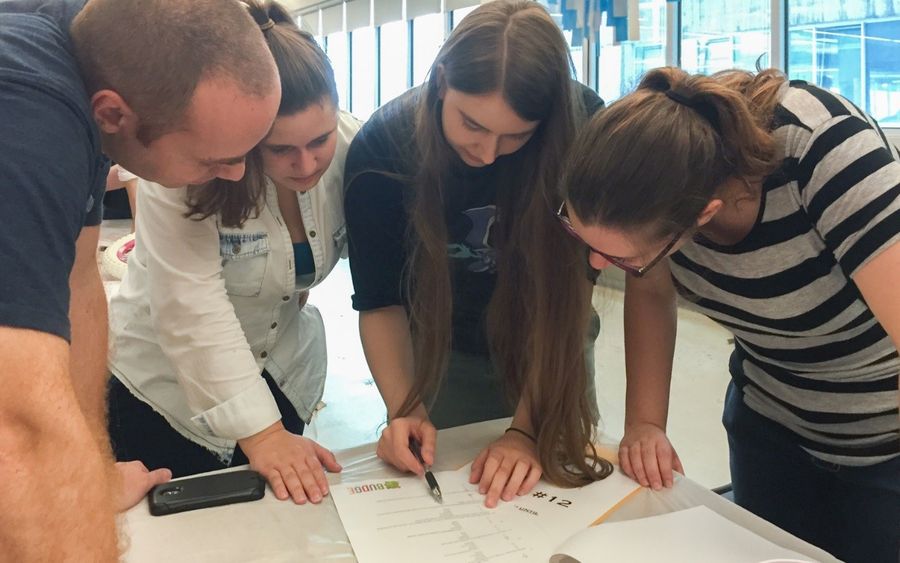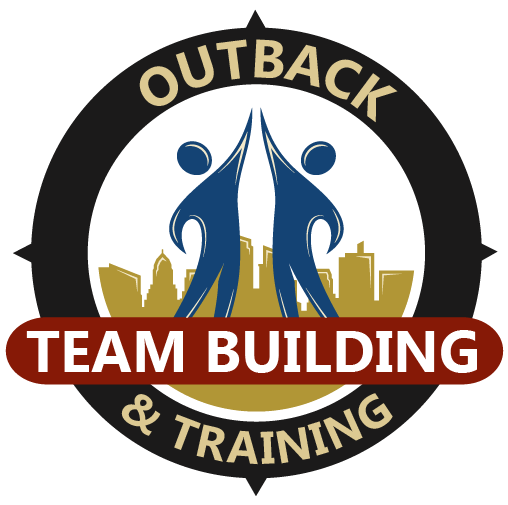Planning a team building event can seem overwhelming, especially if you’ve never done it before. Here are nine steps you can take to simplify your planning process and organize a memorable and fun event.

Planning a team building event can seem overwhelming, especially if you’ve never done it before. Here are nine steps you can take to simplify your planning process and organize a memorable and fun event.
Whether this is your first or tenth time organizing a team building event for your group, it can seem like there’s never enough time to plan everything out the way you want.
Let’s face it, trying to plan an exciting activity by yourself that will run smoothly and everyone will like – on top of your everyday responsibilities – can feel impossible.
If you’re feeling totally overwhelmed by all of the details you’ve been asked to coordinate, you can always contact our team of experts for a free consultation. Our Employee Engagement Consultants have worked with hundreds of groups, and can help you find the best solution for your budget, location, and team dynamic.
Keen to tackle it on your own? We respect that! Read on to find out nine easy steps you can take to make the planning process seem a lot more manageable.
The 9 Things You Can Do to Make Planning Your Event Easier Than Ever
When planning your next team building activity, follow these nine easy steps to ensure your event is a success.
1. Determine Your Timeline
The golden rule when it comes to planning a team building event? The more time you give yourself to prepare, the easier it will be to plan.
Our team of event planning experts typically recommend at least four to six weeks to plan an activity for less than 100 people. If your event is larger than that, try to have a minimum of four to six months.
Once you’ve determined your rough timeline, our team suggests creating a task list in Excel to plan your scheduling in more detail. A list like this can help you track when things need to be completed by. For a more visual timeline, you can also try converting your Excel task list into a Gantt Chart.
You can download The Ultimate Guide to Team Building for a free sample Excel task list and Gantt Chart template.
2. Set Up Your Planning Team
As you may already know – or may be finding out – it can be difficult for one person to plan an entire team building event. There are so many moving parts that it would be almost impossible for one individual to take full responsibility for the entire thing.
By setting up a team to help you plan, you can delegate tasks, and easily get the opinions of your colleagues to help you make decisions for your event. Make the most of group brainstorming sessions by using tools like mind maps and flip charts!
Putting together a team also gives you the option of appointing someone else to take the lead if your workload is too heavy, or you’ll be out of office during the planning process.
Not sure how to set up your planning dream team? You can start collaborating with your coworkers by asking for help with a simple and friendly email like the below.
Subject: Help Wanted! Team Building Event Planning
Hi All,
As you may know, I’ve recently taken on the task of organizing our department’s next team building event, and I need your help!
Please let me know by Friday if you are available to help me take care of a few planning details, such as:
- Selecting the group activity
- Booking a venue or location
- Creating an agenda for the day
Thank you!
3. Define Your Goal
Having a clearly defined objective or purpose for your team building activity can help ensure it’s both fun and effective. But unless your boss has told you specifically what the goal of your team building event is, you may not know where to begin.
The five “W” questions are a great jumping-off point to help you define your goal: Who? What? Where? Why? When?
When answering each question, try to be as specific as possible and answer with as much detail as you can.
For example, here are sample answers to the five “W” questions:
- Who: Sales team of 45 people
- What: Fun activity
- Where: New York City
- Why: Reward event for an awesome quarter
- When: August
Put that all together, and here’s a clearly defined objective for a team building event:
We want to reward our sales team of 45 people for an awesome quarter with a fun activity this August in New York City.
4. Put Together Your Guest List
Sometimes, determining your guest list will be as easy as counting the number of employees in a certain department, as in our above example about a “sales team of 45 people.” On other occasions, deciding who will be attending the team building activity may require a bit more effort.
If you’re unsure of who will be at the event, here are three important questions to ask yourself when creating your guest list:
- Is this a mandatory event? Or can anyone sign up to attend?
- What is the maximum number of people the budget and venue can account for?
- Will any employees with disabilities be attending? Or will individuals who work remotely be invited?
Based on your answers to these questions, you should be able to put together a rough idea of who will be attending.
5. Create a Detailed Budget
The best way to put together a realistic budget is to talk to your boss. Ask how much money is available for the event, and what the expectations are for the budget.
If your boss doesn’t have a concrete number for you, ask about previous team building activities to get a sense of what the budget has been in the past. From there, you can align your costs with prior events.
Try to keep your budget realistic, but leave a little wiggle room for unexpected expenses. Our team recommends budgeting for the following items:
- Transportation and parking
- Venue booking and permits
- Activity providers
- Food and beverage
- Insurance
You can plan out the costs for your activity and keep track of your expenses along the way with a budget table, created in Excel. Find your very own budget table template in The Ultimate Guide to Team Building.
6. Pick a Date & Time
Picking a date and time may seem easy at first, but you want to ensure that you take busy calendars into consideration before finalizing these details.
For example, if you have key stakeholders who need to be at the event, you’ll want to make sure that those individuals are free before you commit to a day and time. Depending on the activity you choose, you may be able to run your team building event over a few hours or a few days to accommodate more people’s schedules.
It’s also important to take seasonality and weather into account. Say your whole team is really set on doing an outdoor activity, it’ll be important for you to pick a time of year that traditionally has good weather.
7. Choose a Venue or Location
The right venue or location can make or break your team building activity.
For example, you’ll want to avoid venues that won’t be able to accommodate your group or activity. You’ll also want to find a venue or location that isn’t too far away to cut down on travel time and costs.
The following questions can help you find the best venue or location for your event:
- Will you be hosting an indoor or outdoor team building activity?
- How many participants can fit in the venue?
- Are there extra amenities, such as Internet access, audio, or visual equipment?
- Do you need a special permit or permission for outdoor areas?
- Is parking available, either for employees’ cars or a company-hired bus service?
- Is weather a factor that you need to consider?
If you take the above questions into account, you’re sure to find a venue or location that’s ideal for your group’s event.
8. Devise a Logistics Checklist
After the larger elements have been decided, you can focus on the smaller day-of logistics surrounding your event. By putting together a detailed checklist, and you can help prevent important things from falling through the cracks on the day.
Here are a few items to consider including on your logistics checklist:
- Transportation – Will the company take care of transportation or will participants be responsible for getting themselves to the activity?
- Food & Drinks – Will the company provide food or drinks?
- Liability Waivers – Will participants need to sign a waiver to attend?
- Accommodation – Will participants be staying at an off-site location overnight?
- What to Bring – What do participants need to know in advance? For example, should they bring clothing for wet weather?
- Special Circumstances – What arrangements are needed for employees with disabilities or injuries?
9. Develop an Event Day Agenda
Your team will most likely want to know what they’re doing for your team building activity. An agenda can help you schedule out the day and easily communicate to your colleagues what will be happening during the event.
Your agenda should highlight everything employees will be doing, from arrival and departure times, to the duration of the activity, to meeting points.
Our team recommends distributing the agenda to participants in the weeks leading up to the event, with notice that it may be subject to change. Not only will this help prepare attendees’ expectations for the day, it will also serve to get people excited about what they’ll be doing.
For a sample agenda template, you can download The Ultimate Guide to Team Building.
Still Not Sure Where to Begin?
Check out The Ultimate Guide to Team Building for step-by-step instructions, examples, and templates that can help you simplify your planning process. For additional support and expert advice, get in touch with our team of Employee Engagement Consultants for your free consultation.
“So, it was a HIT – the team LOVED the activity!!! I would absolutely do it again…the process and planning was seamless, and all I had to do was approve the expense – thank you!" — Expedia


